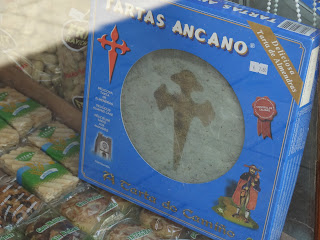Hello!
One thing I did during my time in Vigo that sometimes surprises people is taking a magic class.
I can understand how on the surface it might seem slightly random, and at odds with my other modules which were focused on languages and history. However, it came about quite naturally.
I found a booklet in my residence about optional extra courses students could do for one or two credits. There were all kinds of things: photography, guitar, drums, cookery. I was interested in all of the above, but for timetable reasons the magic class looked the most promising.
I signed up, and it was so easy and quick - the admin at Vigo was wonderful. I then went to my first weekly class, in Edificio Miralles: a long, thin building on stilts.
It was located between my faculty and my residence, which was convenient - Magic was my last class on a Monday, so I could head straight home afterwards.
I was amazed at how big the building is inside compared to how it seems from the ground below. There are rows of seats outside the classrooms where you can wait, and the views of the mountain campus from the windows behind them - the ones in the photo - are stunning.
The classes were relaxed and interesting. Our teacher was passionate about magic and performed his tricks with real charisma. He let us work at our own pace, sitting with us and helping us if we needed it.
I was the only student - to my knowledge - who wasn't a native speaker of Galician or Spanish, but there is something universal about magic tricks. I had done some when I was a kid, which helped. I remembered a trick I used to do centred around the Aces, and impressed the teacher with it.
The class mainly consisted of older men, with one other woman and three male students my age. This was a different demographic to what I encountered on a day-to-day basis at the university and in my residence, so it was a way of learning how older people live in Vigo, and how they talk.
Their way of speaking struck me as very articulate, with a dignity that I admired. They asked me once about Brexit, but mainly we just discussed magic and helped each other to understand the tricks.
One concern I had before starting the course was the cost of the equipment I might have to buy. However, the only essential equipment was a pack of cards, and we could buy them from the teacher. The only other things we really used were paper and pens, which I had anyway for my other classes.
At the end of the course, we performed a show for friends and family. I did a trick, speaking in Spanish, which took courage, but it went well and I was happy and proud. We then received our certificates and a very quirky magic wand, which I appreciated. It was a nice afternoon.
I am glad I chose to do this extra module, and I recommend doing something like it to anybody going to Vigo or abroad. You can learn or polish a skill, be completely immersed in the language you're learning, and meet people you might not otherwise. It definitely improved my confidence.
Thanks for reading.
Liz x



















































































